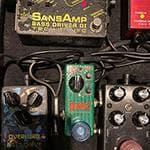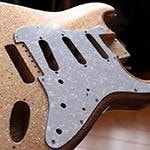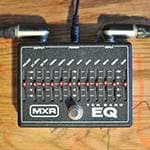As this is Part 3 of my discussion on the 1954 Stratocaster, I would like to go into more detail. This will serve as the conclusion of my series on the '54 Strat.
[Headstock]
This is the very feature that defines the Stratocaster. Its shape is exceptionally elegant and sleek. The 1954 model has a specially beveled edge, giving it a smooth feel, whereas later models are slightly more angular (see photo). It’s likely that this exact 1954 headstock shape will never be reproduced again. The so-called "small headstock" seen up until 1965 has a refined look (see photo). Around 1966, companies shifted to the large headstock style.
The small headstock used later on guitars like the Strat cannot truly be called a faithful reproduction of the original. It lacks the delicate lines of the pre-CBS models and instead feels somewhat flimsy. At that time in particular, the rounded contours of the headstock had lost their form. It had always been difficult to perfect that curve, but just like the more affordable LEAD series that also featured a small headstock, The Strat does not replicate the original shape accurately.
In the past, many players disliked the large headstock, but today, even under new company ownership, new models continue to be released featuring it. Of course, Jimi Hendrix is the most obvious example, but looking back, even Ritchie Blackmore used a large headstock, and later, Yngwie Malmsteen as well. It’s fair to say that the large headstock has now earned widespread acceptance. In particular, the Yngwie Malmsteen model was featured in Fender Japan’s catalog for many years, which suggests there was a consistent demand for it.
But, is this headstock shape truly original? That remains debatable. One reason is that the custom guitar company Bigsby had already produced a somewhat similar headstock before Fender. However, Leo Fender claimed he was inspired by ethnic instruments. Indeed, some old traditional instruments do bear a resemblance to the Fender small headstock. This debate has been ongoing for decades, and the truth may forever remain a mystery.
Still, it’s clear that the headstock design,with its in-line tuners arranged neatly on one side with its clean and ergonomic layout is both elegant and practical. Unlike the angled headstock on a Les Paul, it extends straight from the neck. To adjust the string tension, especially for the 1st and 2nd or even 3rd and 4th strings, tension pins are used to maintain balance. Without a doubt, it was Leo and his team who were the first to popularize this design worldwide. That much is certain.
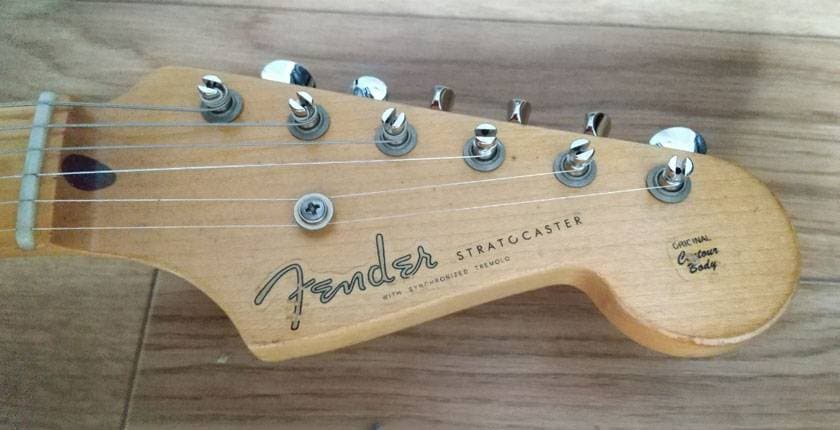
Stratocaster Headstock
From 1955 to 1965, the headstock generally took on this shape.
[Neck Joint Area]
This area also features a detail unique to the 1954 model. On the right side of the joint, where the neck meets the body, the body side is sharply angled at an almost right angle. However, from 1955 onward, this area was made with a smoother contour (see photo). It seems the earliest Stratocasters didn’t reach full refinement, which can possibly be due to the labor-intensive nature of their production. Though this detail likely doesn’t affect tone.
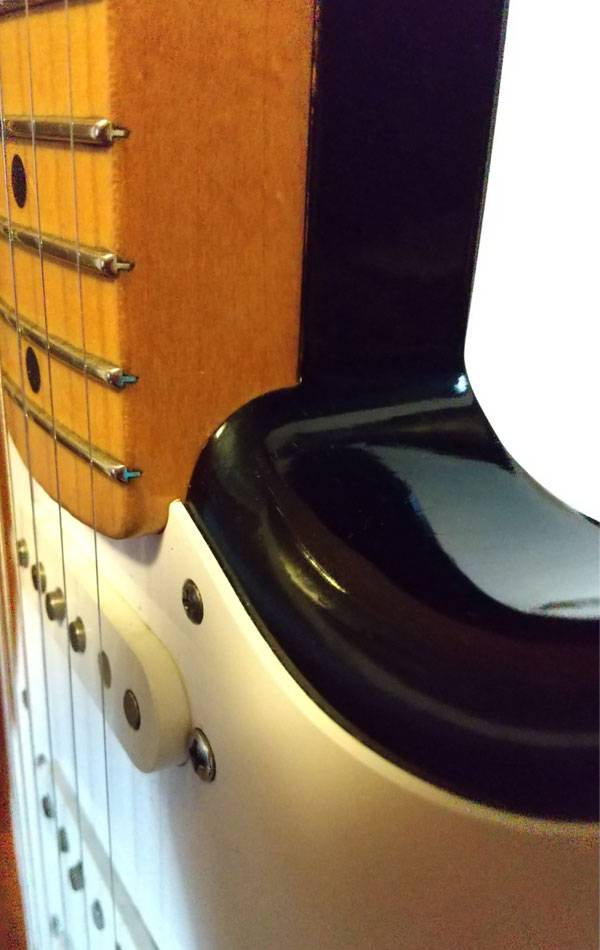
Neck Joint Shape
From 1955 onward, the body at the neck joint area (the dark section) became more gently curved. My Custom Shop Strat is a 1954 model, but its joint isn't sharply angled either.
[Dot Position]
There’s one thing that bothers me about my 2002 Custom Shop model based on the 1954 Stratocaster: the spacing of the dots at the 12th fret is too narrow (see photo). On the original, the spacing is slightly wider. It’s so close! But I’m sure American builders must have thought, “Why are you being so nitpicky?” It’s a complaint that feels very Japanese, even to me.
Maybe this could be fixed by placing a custom order with a Master Builder, but that kind of work doesn’t come cheap...
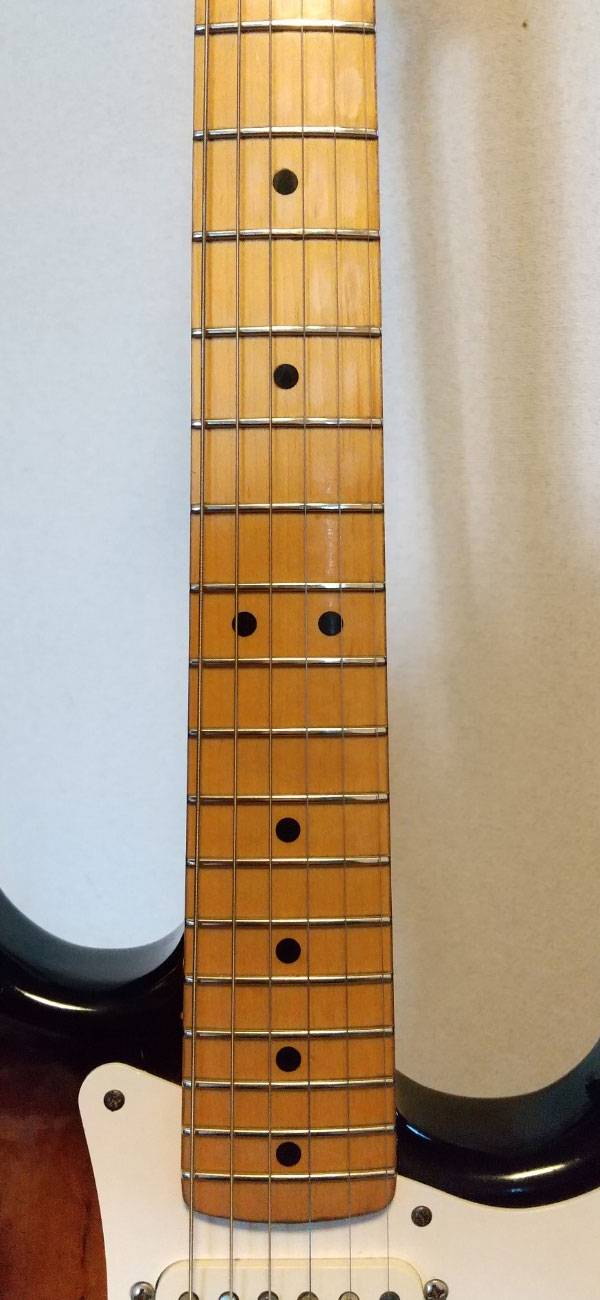
2002 Custom Shop '54 Relic model – The spacing of the black dots at the 12th fret is narrower than on the original.
[Control Knobs]
The volume and tone knobs on the 1954 Stratocaster are notoriously fragile. Most of the original knobs from '54 are cracked. If by some miracle yours are still intact and have retained their shape, remove them without hesitation and replace them with reproduction parts (available from Sound House). In the vintage market, where originality is highly prized, having intact original knobs in good condition could significantly raise the value of the instrument. Reproduction parts aren’t cheap, but if you plan to pass the Strat down to the next generation, it’s a necessary step. If you still want to play it regularly, you should definitely make the switch.
The pickup covers are also made from a brittle material. The Buddy Holly Custom Shop Signature Model that celebrates the first Strat hero, has a slightly modified pickup cover on the 1st string for this reason.
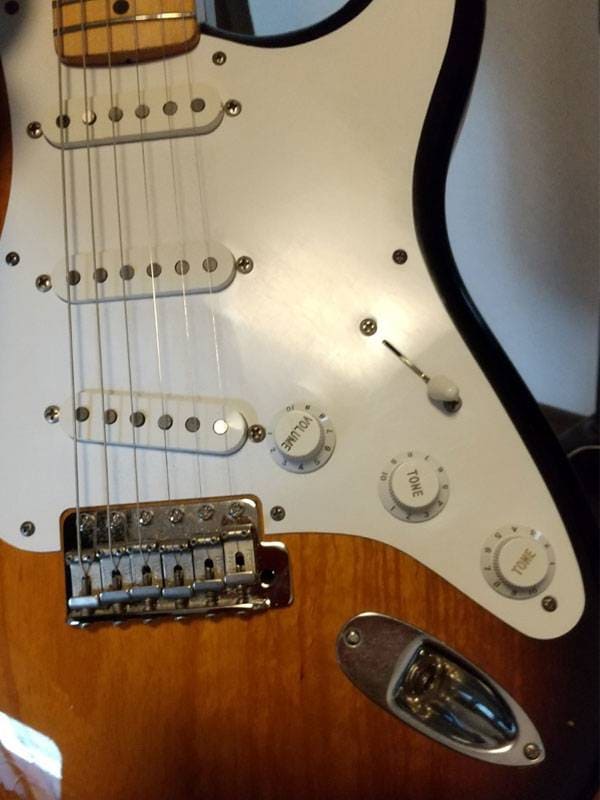
Control Section
I’m not too particular in this area—I use modern, durable parts. Both the volume and tone controls are CTS-made.
[Jack]
The jack on the 1954 Stratocaster is the perfect blend of functionality, aesthetics, and convenience. It's said to have been designed by George Fullerton, the guy who credited the idea to a conversation with his wife. This is truly a masterpiece of guitar design. The fact that this jack style was used exclusively on Stratocasters for decades and was never adopted across the rest of the Fender lineup is quite telling. Its shape is not only unique and futuristic (it’s often likened to a "spaceship exhaust pipe"), but it’s also practical: even when placed on the floor, the jack is unlikely to suffer damage. From the iconic original headstock down to this final jack detail, the '54 Stratocaster is exceptional.
At the time, the Strat was still in a phase of trial and error. As such, many details differ from later models. The headstock shape, the use of Alnico III magnets in the pickups, and even the serial number being stamped on the early tremolo backplates are all unique to this early stage. Tremolo covers with serial numbers in good condition are especially rare, and it's unlikely they would appear frequently on the global vintage market.
While the Stratocaster is now universally accepted, its initial wave of popularity didn't last as long as one might think. By 1959, the cover of Fender’s catalog featured a rosewood-fingerboard Jazzmaster instead to signal a shift in focus (see photo). Though the Strat would eventually adopt a rosewood fingerboard too, its explosive resurgence in popularity is largely thanks to Jimi Hendrix. That turning point wouldn’t come until nearly a decade later. In the meantime, the Strat had to endure a period of relatively modest appeal—but it held on.
Going forward, I plan to trace the evolution of the Stratocaster from 1955 through 1982. Let me re-emphasize: the name Stratocaster as a standalone product name applies only up until 1982. After that, Fender began appending descriptors to the name, resulting in models like the Standard Stratocaster or Elite Stratocaster.
Starting next time, I’ll delve into post-1955 models, year by year, exploring changes like the shift from maple to rosewood fingerboards and many other annual updates that shaped the instrument’s legacy.
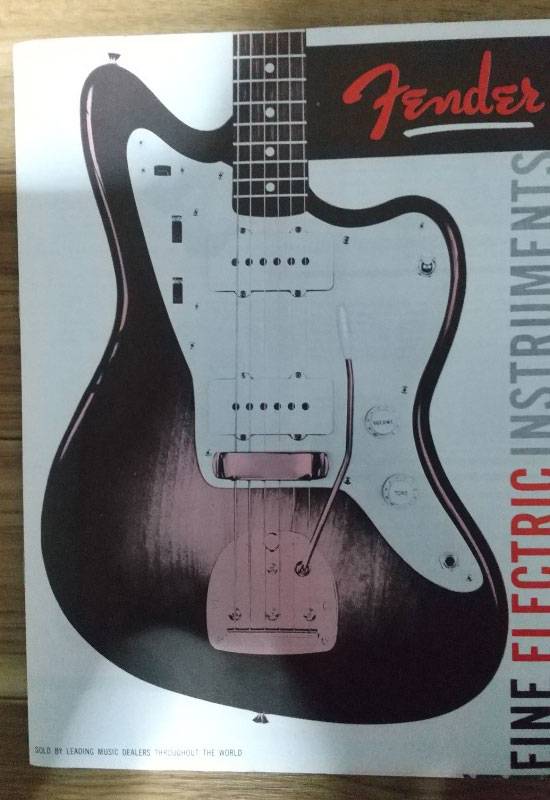
1959 Fender Catalog
In this issue, the Jazzmaster was introduced with a rosewood fingerboard even before the Strat. Here it takes center stage on the cover and is clearly elevated above the Stratocaster.
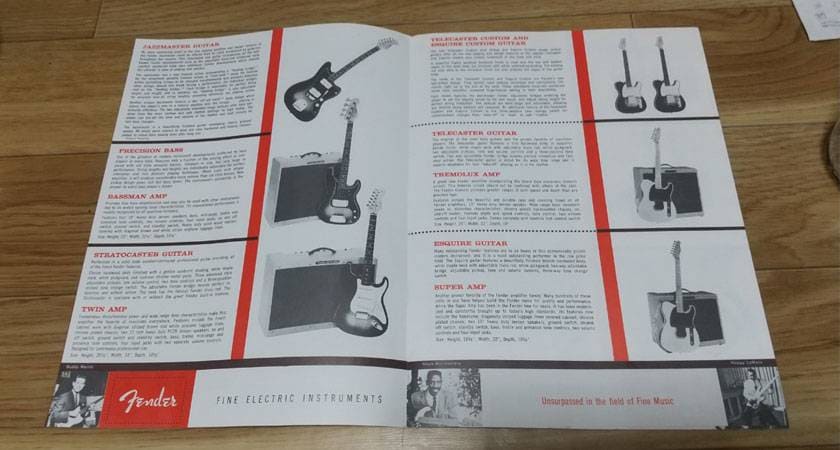
Also from the 1959 Fender Catalog
Not only is the Jazzmaster prominently featured at the top, but the Stratocaster appears to be demoted in status. In the lower-left corner, there's a small photo of an artist—Buddy Merrill, who regularly appeared on TV at the time not with a Stratocaster, but he was holding a Jazzmaster. This choice likely wasn’t accidental; Fender clearly wanted to promote their new Jazzmaster model alongside, or even above, their existing lineup.
The “sound & person” column is made up of contributions from you.
For details about contributing, click here.







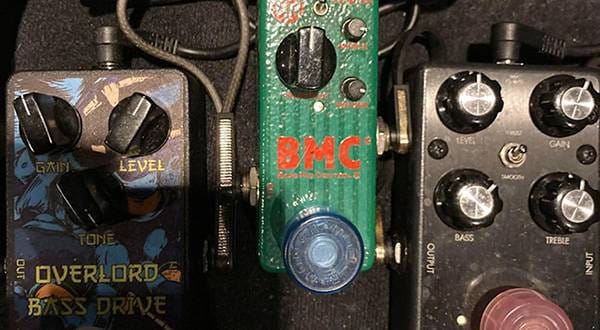
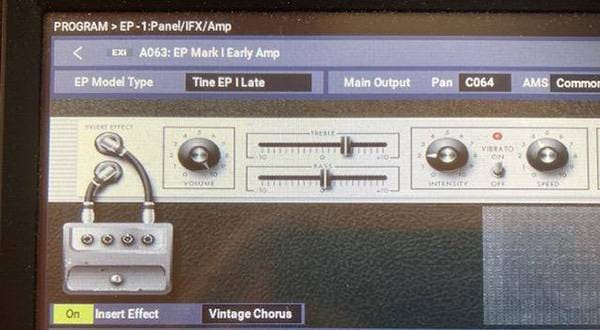
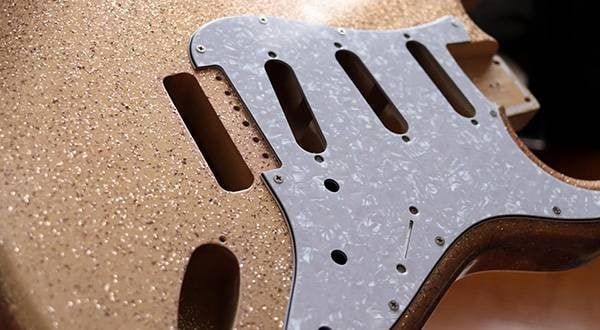
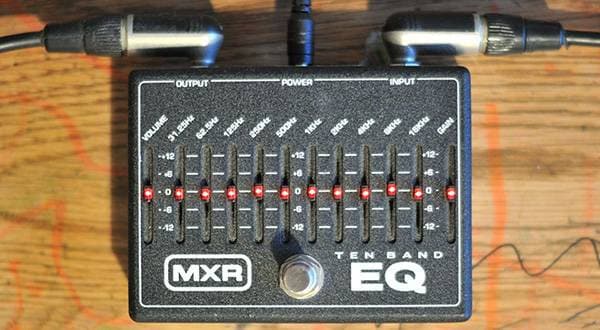
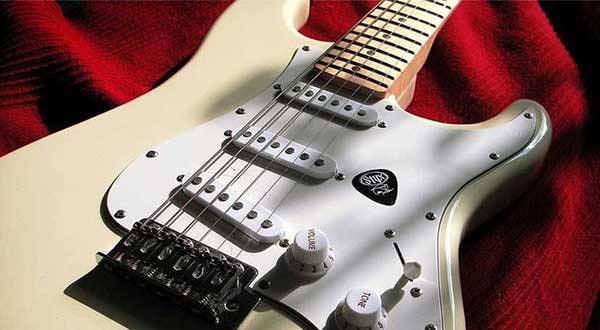
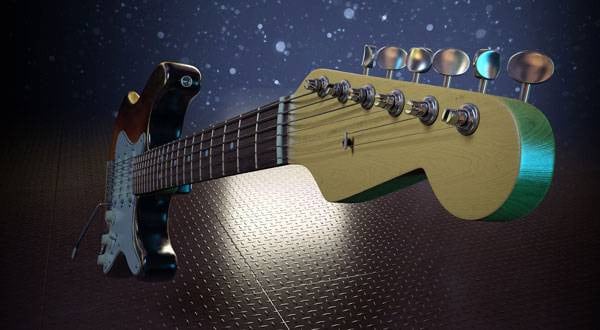
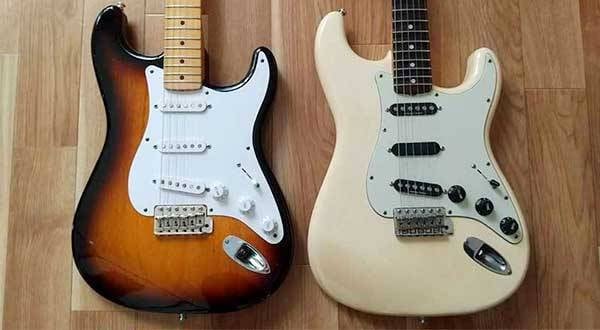
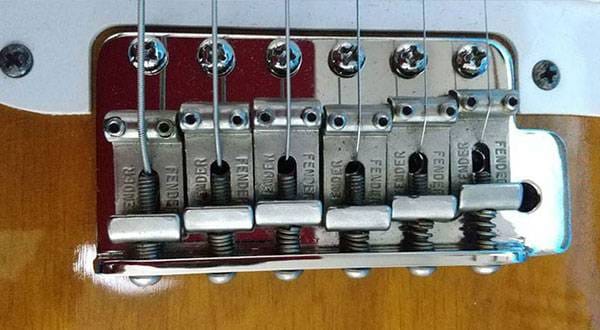


 Fender プロダクトラインナップ
Fender プロダクトラインナップ
 FENDER(フェンダー)ブランドサイト
FENDER(フェンダー)ブランドサイト
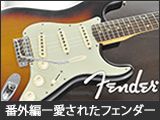 愛されたフェンダーギターたち
愛されたフェンダーギターたち
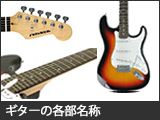 ギターの各部名称
ギターの各部名称
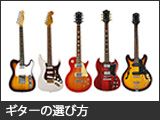 ギターの選び方
ギターの選び方
 ギター名人ラボ
ギター名人ラボ

